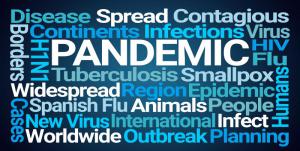4
Confronting Chronic Non-Communicable Diseases: Response Programmes of Selected Caribbean Countries. Caribbean Journal of Public Sector Management. Vol 2, No. 1: 1-11...see more.
Socio-economic and Political Context of Health in the Caribbean. Health Conditions in the Caribbean. Scientific Publication No. 561, Washington D.C., PAHO.
Protecting the Most Vulnerable Children in Society: The Case of Street Children in Trinidad and Tobago. In, Promoting Equity and Social Inclusion: Pathways to Prosperity for All. Ed. Vashti Singh, 115-128. Port of Spain: Trinidad and Tobago National Commission for UNESCO: ISBN 978-976-8210-90-6.
A Review of the Response to HIV/AIDS in Trinidad and Tobago: 1983-2010. Journal of Social Aspects of HIV/AIDS (SAHARA-J) 10 (2): 72-82. Routledge.
[ABSTRACT] This paper examines the character of the response to HIV/AIDS in Trinidad and Tobago and assesses the impact of the response on reducing the spread of the epidemic. The launch of the National HIV/AIDS Strategic Plan in 2004 signalled the intent of the government to take the response to HIV/AIDS to a different level. This is seen by the sheer increase in the volume of resources allocated to the response from the levels of the 1980s and 1990s. The expectation was that there would be increased cohesiveness, which would allow for targeted interventions to be more effective. Though in 2009, there was a slight increase in the HIV prevalence rate to 1.5%, this was due mainly to improvements in access to antiretrovirals and same-day testing as well as improvements in data collection and analysis. The annual number of new infections fell from a high of 1709 in 2003 to 1154 in 2010. Additionally, great strides have been made in the prevention of mother-to-child transmission programme with some regions reporting 100% coverage of antenatal attendees. The study indicates that the country has responded relatively well in the areas of Strategic Planning, Care and Support, and Prevention and there has been involvement by both the public and private sector (NGOs in particular), in the response. However, there are gaps in the provision of social services and the implementing legislation to protect the rights of persons living with HIV/AIDS. Of note is the fact that a successful response to the HIV/AIDS epidemic is one that embraces all social groups, all spheres of activity and all areas of the country...see more.
Social Insurance and HIV/AIDS Treatment and Care: Access Challenges in the Caribbean. In, Revista CIESS, 10: Diciembre, 179 -192
Social Security Directed to Address HIV/AIDS Financing in the Americas . In, The Americas Social Security Report 2005 – Labour Markets and Fragmentation of Social Insurance - Financing for HIV/AIDS by Social Security.
Forging a Sustainable Response to HIV/AIDS in the Caribbean – the Strategic Role of a Regional Conference. Puerto Rico Health Science Journal. Vol.31 (3)
[ABSTRACT] The paper provides a rationale for a Caribbean HIV/AIDS Conference as a key ingredient to the regional response mechanism. This initiative stems from the need to address crucial elements of the regional response within the realities of the present regional economic situation and global financial climate, as well as epidemiological and demographic trends. A mixed method approach was adopted for this study, drawing on both primary and secondary data collection techniques. A small survey of leaders and senior practitioners formed the basis of the primary data collection phase, complemented by key informant interviews…see more.
A Review of the Trinidad and Tobago National HIV/AIDS Strategic Plan 2004-2008. Journal of the Department of Behavioural Sciences. Vol. 2(1).
[ABSTRACT] This paper presents a detailed review of the Trinidad and Tobago HIV/AIDS National Strategic Plan 2004-2008 (NSP), over the period 2004 to 2010. The NSP was developed to initiate an expanded response to the disease as well as to function as a decisive intervention in reducing the incidence and prevalence of the disease. The reality is that the NSP was developed within the context of the potential threat of HIV and AIDS to the socioeconomic base. The Plan was resourced based on the results of analyses which argued that the benefits of implementing the Plan outweighed the cost of so doing. This paper addresses the question of whether it made socioeconomic sense to invest the level of resources that were allocated to the HIV/AIDS NSP over the period 2004-2008. The assessment included an evaluation of the costs and consequences of the interventions. Additionally, a comparison of the goals and objectives of the NSP and the actual results achieved was undertaken, so as to determine the impact of the plan…see more.








